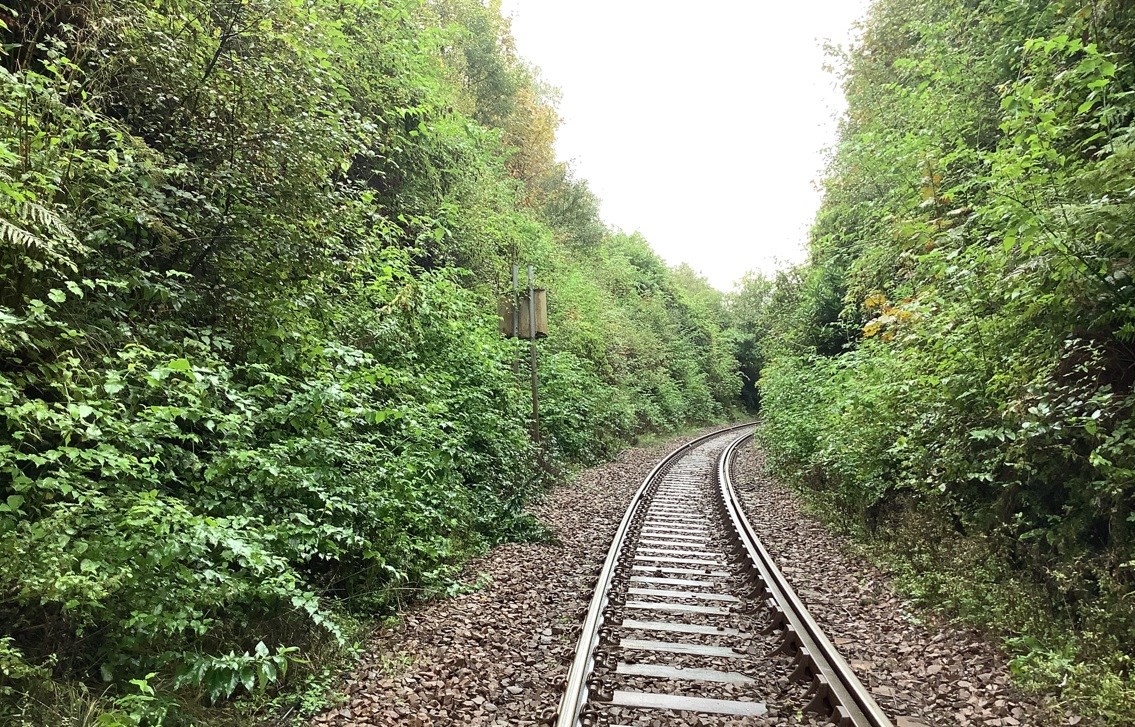Tuesday 18 Jan 2022
Lineside replanting trial to improve biodiversity on the West Highland Line
- Region & Route:
- Scotland’s Railway: Scotland
Network Rail will shortly begin work to remove trees and vegetation on the West Highland Line between Craigendoran and Helensburgh Upper as part of a new trial project to improve lineside biodiversity.
When the felling and removal of trees is complete, the area will be replanted with native trees and shrubs including Holly, Hawthorn, Blackthorn, Rowan, Hazel and Elder.
The replanting will benefit the surrounding wildlife and is part of a trial approach which, if successful, will help Network Rail work towards targets which will see no net-loss of biodiversity by 2024 with an overall net-gain by 2035.
As well as replanting, habitat piles will be created throughout the site to enhance the already present natural features and bat and bird boxes will be installed throughout the site.
As a first step, from January 24 for approximately 10 weeks, all woody vegetation within a minimum of four-metres of the track will be cleared, then any trees that could strike the line if they fell will be pruned or cut-down to remove the risk to the railway.
Cutting of trees and vegetation across this 1.5-mile section of railway is needed to help keep passengers safe and improve performance by reducing the impact of leaf-fall.
Unmanaged vegetation can pose a serious risk to rail safety as trees can fall onto the line during bad weather or, when overgrown, branches and foliage can obscure signals from a driver’s view.
Ahead of work, surveys have been carried out for breeding birds and other protected species as well as to identify a number of trees to be retained for biodiversity reasons, such as those with bat roost potential.
Kirsty Armstrong, Network Rail project manager, said: “We look after thousands of miles of railway embankments and constantly work to manage trees and vegetation so that what grows lineside is safe and does not cause delays to trains.
“Our new approach will compensate for what is removed through managed replanting and transform low value land into areas that will become species-rich, but also safe for the operation of services.
“We will be carrying out as much of the work as possible during the day to minimise the amount of disruption to our neighbours. There will, though, be sections closest to the line where we have no alternative but to work at night.
“Our teams are always mindful of the impact their work can have on lineside neighbours and do what they can to minimise noise from site. We want to apologise in advance if anyone is disturbed by the work.”
Those living closest to the line have been advised about the work in advance.
If anyone has any questions or concerns about this work they can contact Network Rail’s 24hr national helpline on 03457 11 41 41.
Notes to Editors
This project is part of a trial approach which, if successful, will help us work towards achieving our targets of no net biodiversity loss by 2024 and net gain by 2035.
Our team of ecologists advise on the best way to reduce the impact of our work on wildlife and the environment
Felling methodologies and access to and through the site have been identified to minimise the removal of ground vegetation and scrub. Habitat piles will be created throughout the site to enhance the already present natural features.
In addition to the creation of man-made habitats, a number of bat and bird boxes will be installed throughout the site.
The species diversity in this location is currently poor but will be improved as the project will see Network Rail replant and maintain this area through a site-specific maintenance schedule.
Over 10 years the regrowth of the woodland will be manged to improve biodiversity and to offset the impact of the work environmentally and on the aesthetics of the local area.
This enhanced habitat will be beneficial for several species including nesting birds, foraging bats, and various invertebrate species. It will also provide cover for badgers and hedgehogs.
The site is located between the two red points on the map.
Contact information
Passengers / community members
Network Rail national helpline
03457 11 41 41
Latest travel advice
Please visit National Rail Enquiries
Journalists
Network Rail press office - Owen Campbell
NR Press Office 0141 555 4108 / 07515 617073
Owen.Campbell1@networkrail.co.uk
About Network Rail
We own, operate and develop Britain's railway infrastructure; that's 20,000 miles of track, 30,000 bridges, tunnels and viaducts and the thousands of signals, level crossings and stations. We run 20 of the UK's largest stations while all the others, over 2,500, are run by the country's train operating companies.
Usually, there are almost five million journeys made in the UK and over 600 freight trains run on the network. People depend on Britain's railway for their daily commute, to visit friends and loved ones and to get them home safe every day. Our role is to deliver a safe and reliable railway, so we carefully manage and deliver thousands of projects every year that form part of the multi-billion pound Railway Upgrade Plan, to grow and expand the nation's railway network to respond to the tremendous growth and demand the railway has experienced - a doubling of passenger journeys over the past 20 years.
Follow us on Twitter: @networkrail
Visit our online newsroom: www.networkrailmediacentre.co.uk

